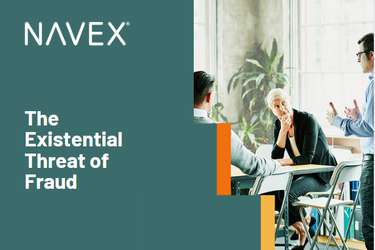A recent study, Report to the Nations on Occupational Fraud and Abuse: 2014 Global Fraud Study from the Association of Certified Fraud Examiners (ACFE) analyzed nearly 1,500 cases of occupational fraud as reported the Certified Fraud Examiners who investigated them.
The report says that “the typical organization loses five percent of revenues each year to fraud. If applied to the 2013 estimated Gross World product, this translates to a potential projected global fraud loss of nearly $3.7 trillion.”
The report also points out that external audits are not very effective at uncovering fraud, and should not be an organization’s primary anti-fraud tool. In fact, external audits were a factor in uncovering only three percent of the cases included in the report. In contrast, seven percent of the cases were uncovered by accident.
What Can Truly Help Prevent Fraud?
A strong culture of ethics and integrity is key to preventing and deterring fraud and the financial—and cultural—toll it takes on organizations. Compliance professionals have a major role to play in helping support anti-fraud efforts by ensuring that their ethics and compliance programs are robust, prominent and effective.
To best prevent fraud, compliance professionals should assess their organization’s fraud risks, and design anti-fraud programs that will effectively mitigate their unique risks. They should also consider taking the following steps:
- Review and Strengthen Anti-Fraud Policies: If it’s been a while since your fraud policy has been reviewed, take the time to do it. Ideally, have it reviewed by a trusted legal advisor to ensure it is up-to-date and relevant for all your key audiences.
- Train Employees on Fraud Policy: It may sound obvious, but organizations that have an anti-fraud policy and train employees on the policy are better positioned to prevent fraud. Ensuring that your key audiences have read, understand and attest to your fraud policy will help ensure a culture of no-tolerance for fraud or misappropriation of funds. (Learn how best to manage policies and attestations in our Definitive Guide.)
- Provide Targeted Anti-Fraud Training to Supervisors and Managers: According to the report, managers were responsible for 42 percent of the occupational fraud cases covered. Training managers specifically on the risks and factors that can lead to fraud is an essential part of an overall anti-fraud initiative. Short-form or micro-learning courses provide a cost-effective way to deploy targeted training to bolster mitigation efforts.
- Train Third Parties: Nearly half of the fraud cases cited in the report took place in the U.S., which has strict anti-fraud controls. However, “the biggest losses were in Eastern Europe and Western and Central Asia. The median loss in those regions was $383,000, compared to $100,000 in the U.S.,” the report notes. For many organizations, a key risk area is fraud related to third parties—particularly those located outside of the U.S. Ensuring third party due diligence is in place—and training third parties on anti-fraud policies—is essential in mitigating fraud risk—particularly third party risk.
- Make Sure Your Employees are Aware of—and Regularly Encouraged to Use—Your Hotline: According to the report, organizations with hotlines detect fraud 50 percent more quickly than those that don’t. In addition, “organizations with hotlines were much more likely to catch fraud by a tip….and also experienced frauds that were 41 percent less costly.” Hotlines are a crucial piece of the puzzle for catching fraud, but they don’t work if audiences don’t know about them. It is vital to ensure that employees know how and when to access a hotline through proactive, regular awareness-building through multiple communications channels and awareness programs.
Cultivating a Culture of Ethics, Integrity & Compliance
Evidence for the financial benefits of healthy corporate culture continues to mount. Compliance professionals who are proactively showing the benefits to their organizations’ leadership are more effectively protecting their organizations’ reputations—and their bottom-lines.









